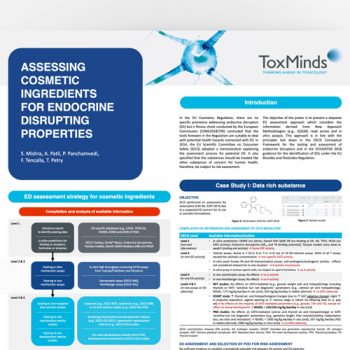
Unravelling the EU’s ERA Guidelines for Medicinal Products: What’s in the Box and What’s Still Missing?
Abstract
Human use of pharmaceuticals may pose significant risks to ecosystems, with contaminants entering environments via wastewater treatment plants, landfill leachates, and direct disposal. Recent updates to the EU’s Environmental Risk Assessment (ERA) guidelines for medicinal products (EMEA/CHMP/SWP/4447/00 Rev. 1 – Corr.) enhance sensitivity and precision, incorporating more rigorous assessments to balance environmental protection with access to essential medications. Some gaps nevertheless remain in the process, for example inadequate coverage of metabolites, limited real-world exposure scenarios, and little post-market monitoring.
What’s in the box?
The 2024 EU ERA guidelines boost environmental protection by using detailed dose-response data, checking multiple impact areas, syncing with global standards, focusing on post-market monitoring, and applying the precautionary principle to manage risks early.
The most eagerly anticipated improvement is the shift to dose-response curves from the binary “effect/no effect” method. Using the EC10 value, which measures the concentration causing a 10% effect, allows for more precise detection of environmental impacts at lower concentrations. By then incorporating EC10 values and realistic exposure scenarios into Predicted Environmental Concentration (PEC) calculations refines the risk assessment by better reflecting actual environmental conditions and usage patterns.
The updated guidelines now focus on evaluating a range of biological endpoints—growth, reproduction, and survival—instead of just immediate effects. This holistic approach enhances understanding of how pharmaceuticals affect ecosystem health and aims to better predict long-term impacts on wildlife through chronic toxicity testing.
The new guidelines are better aligned with international standards, including those set by the International Council for Harmonisation (ICH) and the Organisation for Economic Co-operation and Development (OECD). Additionally, they harmonize with other EU regulatory frameworks, such as REACH and biocides.
The updated guidelines also highlight the importance of keeping an eye on the environment after products hit the market. They stress using the precautionary principle more and improving risk assessments. This proactive approach helps catch and deal with any new risks early, making environmental protection more effective.
What’s still missing?
The updated EU ERA guidelines are an upgrade and provide a more accurate and thorough assessment of the environmental impact of medicinal products. They nevertheless miss some areas of potential improvement. For example, they don’t cover antimicrobial resistance (AMR), waste from production and packaging, or human health risks from polluted water. There is also still inadequate coverage of metabolites, limited real-world exposure scenarios, and little post-market monitoring. Incorporating these aspects would further enhance the guidelines’ comprehensiveness and effectiveness.
ToxMinds has over a decade of experience in helping clients navigate the pharmaceutical, biocide and REACH Regulations and has in-depth expertise in environmental risk assessment across these frameworks. We can help you to proactively manage the potential environmental risks arising from pharmaceuticals in the environment, ensuring that they are adequately studied, and suitable precautions are taken in case specific risks are found. For more information about our expertise and how we can assist you, please contact us at info@toxminds.com.
Stay informed by signing up for our newsletter.



